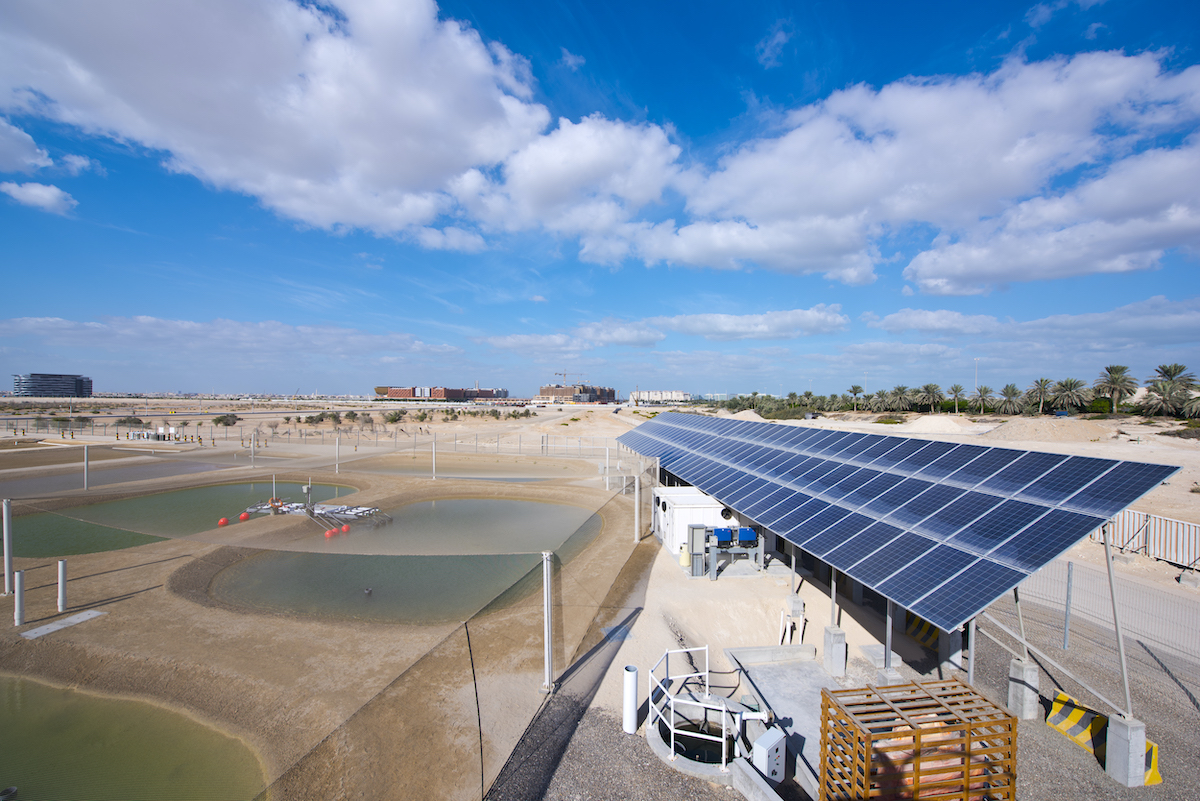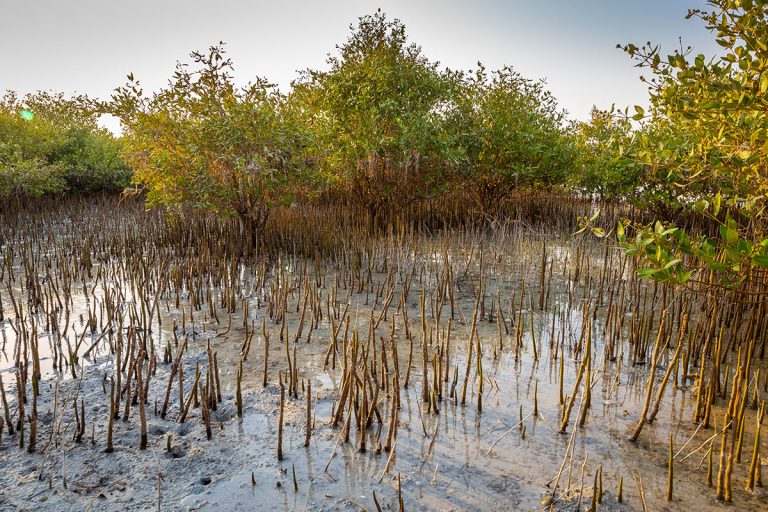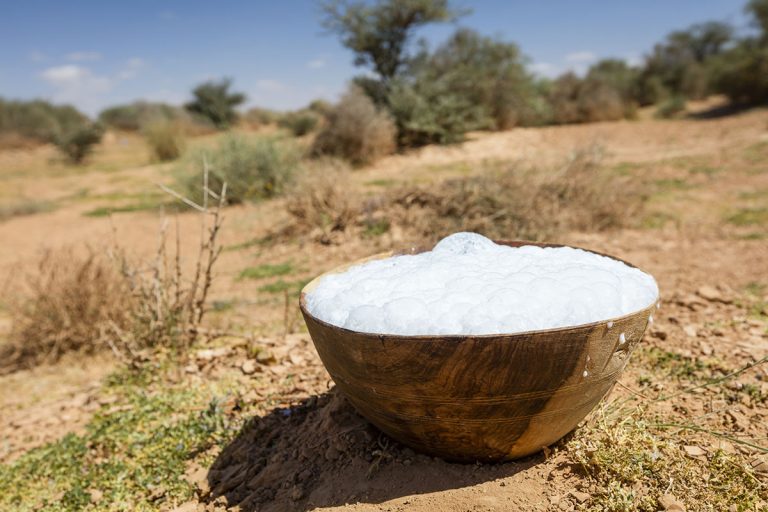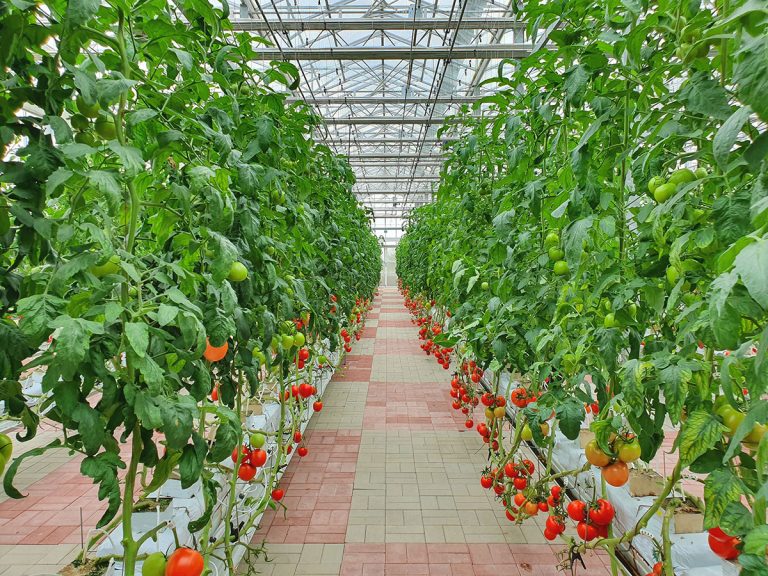Transforming deserts into green oases using seawater
Salt-tolerant plants and microbes irrigated by seawater can generate valuable bio-resources, in a system that turns desert sands into rich soil.
At the heart of barren coastal deserts lies the potential to transform seemingly inhospitable terrain into sustainable ecosystems generating biofuels, food and other valuable products.
Over the past eight years, the viability of the pioneering Seawater Energy and Agriculture System (SEAS) has been fully demonstrated at a two-hectare pilot plant established by Khalifa University’s Sustainable Bioenergy Research Consortium (SBRC).
Aquaculture, agriculture and aviation fuel
The SEAS concept of irrigating an agriculture and biofuel system with seawater depends not only on a salt-tolerant (halophytic) species of Salicornia plant, but also on the transformation of desert sand into agricultural soil. To develop and sustain the soil and nourish the Salicornia a three-stage system has been developed. In the first stage, salt water from the ocean is held in ponds where fish and shrimp are cultivated. The nutrient-rich wastewater from this phase irrigates the Salicornia biomass grown in phase two.
“The project is now at an inflection point,” says Alejandro Rios Galvan, SBRC Director, emphasizing the need for new investment to establish the system as a full-scale commercial operation. Research engineer Joao Uratani, who is overseeing the business development initiatives explains: “We are more than halfway there in terms of the funding needed, and we now need to reach out to sustainably minded investors that understand the long-term needs but also great opportunities.”
“Using natural polymers and fibers from food waste, we are learning how to stabilize the sandy soils typically found in the region, increase their organic content and improve their performance in carbon fixation.”
M-Haidar Dali
The SEAS project initially focused on producing aviation fuel from the Salicornia seeds, and was supported by major commercial aviation companies including Boeing, Honeywell, General Electric, Safran and Etihad Airways. Early success led to a commercial Etihad Airways flight, fuelled partially by biofuel from the pilot plant, flying from Abu Dhabi to Amsterdam in January 2019. The options for making valuable products from the Salicornia biomass have now been extended to include biogas and other useful chemicals1.
Plants to products
Khalifa University’s multidisciplinary personnel and scientific resources can cover the diverse needs of such an innovative and multi-phase project that requires expertise in aquaculture, agriculture, forestry, plant and microbial science, and engineering.

At the heart of the process are the halophytic plants and the waste stream generated by the aquaculture subsystem, which facilitate the conversion of desert sand into rich organic soil. Both are essential for growing plant biomass in such an unconventional environment.
Plant scientist Houda Chelaifa explains that converting the desert sand into proper soil was achieved by adding organic effluent from the aquaculture ponds, stimulating the growth of a microbial community, and then incorporating the interaction with the halophyte root system and other biomass waste. “It’s just amazing how we have transformed the sand,” she says.
Chelaifa’s research focuses on learning more about the Salicornia plants, including genome sequencing. She hopes to apply the knowledge gained to develop more effective hybrids, either by conventional plant breeding or perhaps using CRISPR gene editing to modify the plant genome directly.
“The main challenge now is to get the funding, because we already have a plan in place for scaling up.”
Rafael Gonzalez Hernandez
“We want to identify the specific genes that make the plants able to survive in the salty environment, examine the differences between different species of Salicornia including our native species, which are different from those currently used in the pilot plant, and then perhaps develop more efficient hybrids,” she says.
The SEAS project serves as a fertile early-career training ground for KU postgraduate students. M-Haidar A. Dali, for example, focused his master’s research on using locally sourced biomass to enhance soil, not only at the SEAS plant but more widely across the UAE.
“Using natural polymers and fibers from food waste, we are learning how to stabilize the sandy soils typically found in the region, increase their organic content and improve their performance in carbon fixation,” Dali explains. “I am really enjoying my work on the project, which is equipping me with valuable skills and experience to develop my future career plans in sustainable engineering and research.”
Scaling for commercialization
Chemical engineer Rafael Gonzalez Hernandez oversees the operations across all parts of the SEAS pilot plant. Having worked through the challenges and development of the project, which has evolved substantially from its initial focus on producing aviation fuel to the current wider range of applications, he is now identifying the requirements for scale-up into real commercial operations.
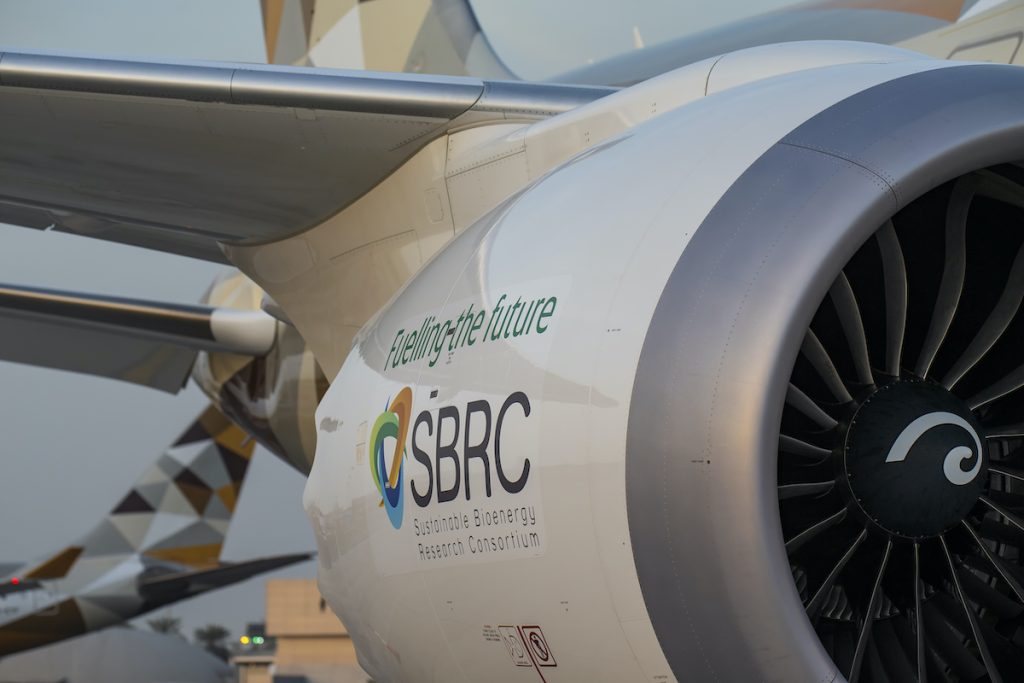
The team has sourced a 200-hectare plot of land in the Western Region of Abu Dhabi, available for the first phase of commercialization. “Each of the three parts of a fully commercial operation would need to be at least the size of our entire current facility, but we have done all of the technical demonstrations needed to move up to much larger scales,” Hernandez says. “The main challenge now is to get the funding, because we already have a plan in place for scaling up.”
While the fish, and shrimps can be used as food, and the mangroves as biomass fuel and a source of trees for reforestation, the options for making use of the Salicornia are more varied, They include use as livestock feeds, cooking oil, cosmetics products and in biogas generation, in addition to aviation fuel.
While working on research for his master’s degree some years ago, Uratani contributed to the diversification of outputs by using experimental microbial ecology methods to engineer microbiomes that could flourish in salt-water conditions and generate biogas. This led to a patent for their innovative method to convert biomass into biogas using salt-tolerant microbes.
“The amount of desert arid land around the world suitable for this technology is roughly equivalent to the world’s arable land. So, the geographical opportunities are global, and potentially immense.”
Joao Uratani
Today, Uratani is developing the business case for commercialization and looking for new investors to take that major step forward. He explains that the wider future options are somewhat out of the field of expertise and interest of the original commercial members of the SBRC consortium, mainly focused on aviation fuels. “What we need for this next step is to engage with more traditional agriculture-oriented investors,” he explains.
In terms of future potential, not just for the UAE but also worldwide, Uratani says that the amount of arid desert land around the world suitable for this technology is roughly equivalent to the world’s arable land. “So, the geographical opportunities are global, and potentially immense,” he says enthusiastically.
That enthusiasm is shared by everyone on the project and underscores the key challenge of spreading the word and bringing sufficient investors on board.
Reference
1. Chelaifa, H. et al. Beyond the greenhouse: coupling environmental and salt stress response reveals unexpected global transcriptional regulatory networks in Salicornia bigelovii. bioRxiv, 2020) | Article

